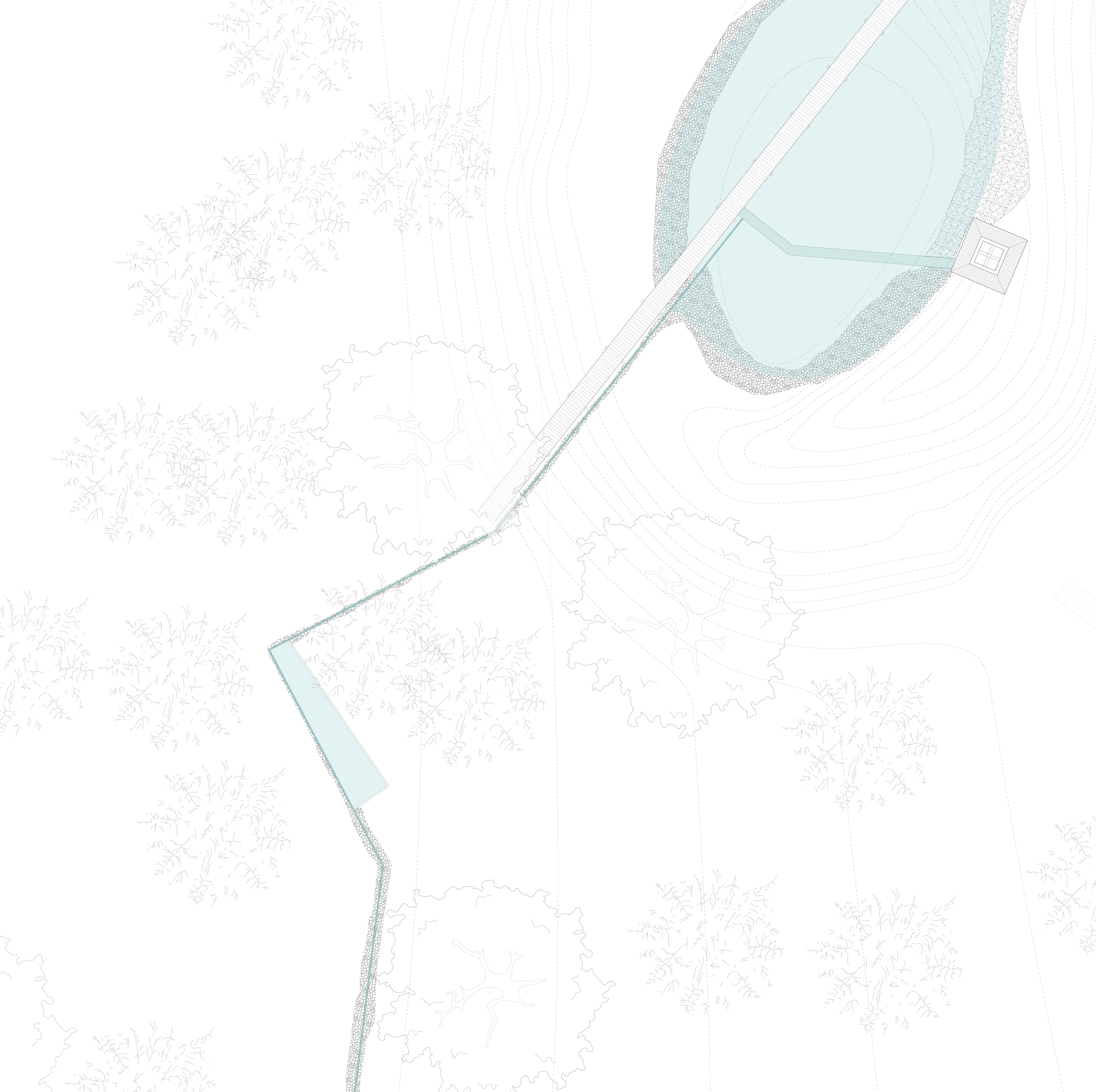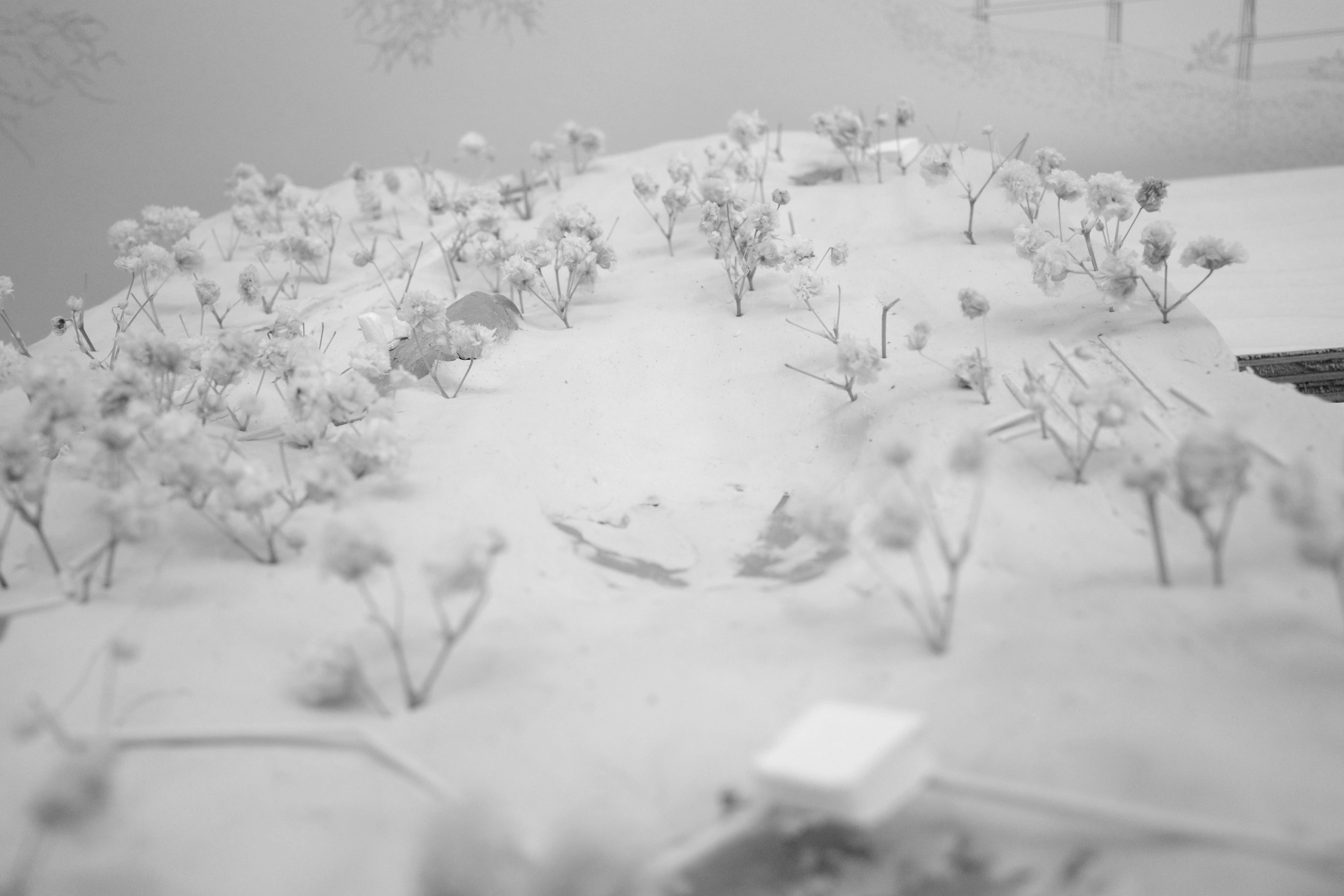The Field Paths
Columbia GSAPP, Spring 2024
Critics: Sandro Marpillero, Sonal Beri
Site: Godhavi, Ahmedabad, India
Columbia GSAPP, Spring 2024
Critics: Sandro Marpillero, Sonal Beri
Site: Godhavi, Ahmedabad, India
The Field Paths are created in relationship with the existing landscape. By connecting key ecological points across the canal and between the watershed, working with the existing conditions and adapting the design to the locale, the presence of the paths upholds the patterns of the farming fields. With a seasonal wetland habitat surrounding the trees, the visible conditions of the landscape form a natural force that resists rigidity and the linear.

︎︎︎ Narmada River Stories
Monsoon, the soul of India, has been vital for thousands of years, it gives life to India’s ecology and culture. With the geographic surface drained by rivers, seasonal rainfall has been nurturing the land and its people.
Narmada River supplies water to the Sarbamati River that runs through the city of Ahmedabad, and supplies water to hundreds of communities with the expanded canal system. Life cycles in these countries depend greatly on the rain.
Currently confronted with overriding infrastructural expansion, pollution and farmland losses. What does harmonious ecology mean in the context of Godhavi, for whom it is intended, at what scale is it achievable, and through what means can it be realized?
 Visible Conditions
Visible Conditions





Natural Extension
As versatility defines conditions of water, seasonality and gravity redefine its movement. The expanse of water in the summer farming fields becomes the initial moment for this sensible practice. Expanding the landscape of organic wetlands as a way of honoring the monsoon and extending water’s presence into all seasons.


︎︎︎Site Sections


︎︎︎Site Sections - Seasonality
